Ski resorts aren’t just for skiers anymore. Whether you’re traveling with friends who love the slopes or simply want to enjoy the mountains in winter, there are plenty of activities for non-skiers. From relaxing spa treatments to thrilling alpine coasters, here’s a quick look at 12 fun ways to enjoy a ski resort without ever putting on skis:
1. Snowshoeing
Explore snowy trails at your own pace. It’s easy to learn, great for families, and gives you a solid workout.
2. Spa Services
Unwind with massages, saunas, and hot tubs. Many resorts offer luxurious spa experiences.
3. Gondola Rides
Take in panoramic mountain views without breaking a sweat. Some rides even lead to mountaintop dining.
4. Snow Tubing and Sledding
Feel the rush of sliding down snowy hills - no lessons or special gear required.
5. Ice Skating
Glide around scenic outdoor rinks, often located near cozy resort villages.
6. Winter Hiking and Photography
Capture breathtaking winter landscapes while enjoying peaceful mountain trails.
7. Dog Sledding and Sleigh Rides
Relax and soak in the scenery as you’re pulled through snowy trails by huskies or horses.
8. Resort Dining and Après-Ski
Enjoy gourmet meals, hot drinks, and lively social scenes - no skis necessary.
9. Skiskating with Snowfeet Mini Skis
Try this fun blend of skiing and skating with compact, easy-to-use gear.
10. Foldable Snow Sleds
Bring a lightweight sled for quick, portable fun on snowy hills.
11. Alpine Coaster Rides
Zoom through the mountains on thrilling gravity-powered tracks.
12. Night Stargazing and Moonlit Activities
Enjoy magical evenings with guided snowshoe tours or stargazing experiences.
Quick Comparison
| Activity | Physical Effort | Cost Range | Family-Friendly | Seasonal Availability |
|---|---|---|---|---|
| Snowshoeing | Moderate | Low ($) | Yes | Winter |
| Spa Services | Low | Moderate ($$) | Yes | Year-round |
| Gondola Rides | Low | Low–Moderate ($) | Yes | Year-round |
| Snow Tubing | Low | Low–Moderate ($) | Yes | Winter |
| Ice Skating | Low | Low ($) | Yes | Winter (some year-round) |
| Winter Hiking | Moderate | Low ($) | Yes | Winter |
| Dog Sledding/Sleigh Rides | Low | Moderate–High ($$) | Yes | Winter |
| Resort Dining | Low | Moderate–High ($$) | Yes | Year-round |
| Skiskating | Moderate | Low–Moderate ($) | Yes | Winter |
| Foldable Snow Sleds | Low | Low ($) | Yes | Winter |
| Alpine Coaster Rides | Low | Moderate ($$) | Yes | Year-round (varies) |
| Stargazing | Low | Low–Moderate ($) | Yes | Winter |
These activities ensure you can enjoy the mountains without skiing. Whether you prefer adventure or relaxation, there’s something for everyone.
A Guide To Ski Resorts for the Non-Skier
1. Snowshoeing on Mountain Trails
Snowshoeing is one of the easiest ways to enjoy the great outdoors at a ski resort. Unlike skiing or snowboarding, which can take a while to master, snowshoeing is as simple as walking. As Kovas, Family Ambassador, explains:
"If you can walk, you can snowshoe - it doesn't take weeks, months, or years to get comfortable moving down the trail. This makes snowshoeing perfect for families, as it doesn't require splitting up by ability or experience."
Most ski resorts now offer snowshoe trails that meander through their mountain landscapes. These trails are a quieter, more relaxed alternative to the busy ski slopes, giving you a chance to explore at your own pace while soaking in breathtaking winter views.
Accessibility for Non-Skiers
One of the best things about snowshoeing is how easy it is to get started. There’s no need for lessons or years of practice. All you need is snow. Unlike skiing or snowboarding, which require specific slopes and equipment, snowshoeing allows you to explore nearly any snow-covered area.
It’s also a budget-friendly activity. Once you have snowshoes, you're good to go - no lift tickets or pricey gear required. You can venture into places that might be off-limits during the warmer months, opening up a whole new world of adventure.
A Workout That Doesn't Feel Like One
Snowshoeing is a fantastic way to stay active in the winter without feeling like you're overexerting yourself. Depending on the terrain and weather, you can burn between 400 and 900 calories an hour - about 45% more than walking or running at the same pace.
Dr. Ray Browning, an expert in health and exercise science at Colorado State University, highlights the benefits:
"Snowshoeing is an exceptional way to achieve cardiovascular fitness, expend energy, and reduce your chance of heart disease."
The best part? It’s gentle on your joints. Unlike downhill skiing, which can be tough on your knees, snowshoeing offers a low-impact way to get your heart pumping. You control the pace - whether you want to take it slow and snap some photos or push yourself for a more intense workout.
Perfect Timing for Winter Fun
Snowshoeing is available throughout the ski season, typically from December to March. Many resorts offer snowshoe rentals and guided tours, so you can try it out without buying your own gear. Some even host evening snowshoe tours, where you can experience the mountain under a blanket of stars - a magical twist to your adventure.
If you’re looking for a quieter experience, weekdays are the way to go. Trails are less crowded, and you might even snag better rental prices.
A Family-Friendly Adventure
What really sets snowshoeing apart is how inclusive it is. Unlike skiing, where skill levels can split families into different groups, snowshoeing keeps everyone together. Whether you're a seasoned snowshoer or trying it for the first time, fitness matters more than experience.
The calm, quiet nature of snowshoeing also lets you fully immerse yourself in the winter wonderland. You’ll hear the satisfying crunch of snow underfoot and enjoy the peaceful stillness of the mountains - something you don’t always get on the bustling ski slopes. It’s a simple, eco-friendly way to connect with nature and each other.
2. Spa Services at Mountain Resorts
Not everyone heads to the mountains for skiing, and that’s where mountain resort spas step in - offering a luxurious escape for those who prefer relaxation over runs. After a day of exploring (or just soaking in the views), these spas provide the perfect retreat. Travel expert Larry Olmsted puts it best:
"You need not be a skier to appreciate the charms of a great slopeside spa, as this short list of top winter resorts from Europe to North America proves. Such hotels can be their own attraction for non-skiers 'dragged' to the mountains by piste-loving companions."
These resort spas go far beyond your standard massages. They embrace their alpine surroundings with treatments inspired by local elements, like wildflowers or CBD rituals. With expansive facilities and unique offerings, these spas are a destination in themselves, especially for visitors looking to unwind without strapping on skis.
Accessibility for Non-Skiers
Mountain spas are a haven for guests who want to enjoy the resort atmosphere without setting foot on the slopes. For instance, The Ritz-Carlton Spa at Northstar California offers treatments like organic facials and muscle recovery sessions tailored specifically for non-skiers.
At The Cliff Spa at Snowbird, guests can indulge in amenities like a eucalyptus steam room, dry sauna, heated pool, and hot tub. One couple reportedly spent three blissful hours exploring these features, which are included with any spa service booking. Even better, daily passes are available for those who just want to enjoy the facilities without committing to a treatment.
No Physical Effort Required
The beauty of spa treatments? They’re all about effortless relaxation. Whether you’re looking for a calming massage or a high-tech recovery session, these services require zero physical exertion - just sit back and enjoy. For example, Six Senses Spa Courchevel offers Muscle Recovery sessions featuring Normatec Dynamic compression boots, alongside traditional massages using arnica and ginger hot oil. It’s relaxation, redefined.
Year-Round Relaxation
Mountain spas aren’t just a winter treat - they’re open year-round, ensuring a slice of tranquility no matter the season. The Cliff Spa at Snowbird operates daily from 8:00 AM to 8:00 PM, offering treatments every single day of the year. Similarly, Cambium Spa at Schweitzer promotes itself as a year-round wellness retreat, proving that mountain relaxation isn’t just for snow days.
Fun for All Ages
Mountain spas also cater to families and groups with diverse interests, making them ideal for multi-generational getaways. These spaces often combine indoor and outdoor features, creating a magical experience for everyone. Nina Groom shared her unforgettable visit to The Cliff Spa:
"The spa experience was nothing short of magical. Snowflakes danced around us on the rooftop as we were surrounded by breathtaking views of Snowbird and Little Cottonwood Canyon. Complimentary tea and the subtle eucalyptus-infused steam room were cherries on top of this absolutely luxurious experience." - Nina Groom
Spas often become a central meeting point for families after a day of varied activities. Whether someone spent the morning snowshoeing or strolling through the village, everyone can come together in the afternoon for some shared relaxation and quality time.
3. Gondola Rides for Mountain Views
If you’re looking for breathtaking mountain views without having to strap on skis, gondola rides are the perfect option. These scenic lifts take you high above the slopes, giving you panoramic views of the surrounding peaks. As OnTheSnow explains:
"You don't have to be a skier or a snowboarder to enjoy a scenic gondola at a ski resort. Just buy a ticket and climb aboard for a unique way to see the mountain."
Travel enthusiast Karthika Gupta shares a similar sentiment:
"One of my personal favorite activities, however, is riding the gondola up and down the mountain. This satisfies my need to get a bird's eye view from the top of the mountain without sacrificing comfort."
But it’s not just about the ride. Gondola trips often lead to mountaintop dining, scenic hiking trails, and other activities that might otherwise take a lot of effort to reach. They’re an easy, relaxing way to experience the mountains.
Accessibility for Non-Skiers
Gondolas aren’t just about the views - they’re designed to be accessible for everyone. Many gondola systems are wheelchair-friendly and offer specialized loading assistance. For example, Whistler Blackcomb ensures accessibility with its Whistler Village Gondola and Blackcomb Gondola, both of which accommodate wheelchairs.
In fact, Whistler Mountain’s Roundhouse Lodge earned Certified Accessible status from the Rick Hansen Foundation in 2024. The lodge includes wheelchair-accessible restrooms, a retail shop, and Pika's Restaurant, with elevator access to upper floors. As Whistler Blackcomb puts it:
"At Whistler Blackcomb, it is our mission to create wonderful memories for our guests, again and again. All guests deserve the very best mountain experience possible."
Some resorts even offer specialized tools, like "Rupert Rollers", to help guests transition from wheelchairs to gondola seats.
Low Physical Effort, Big Rewards
Gondola rides are ideal for those who want to enjoy the mountains without breaking a sweat. They’re a great alternative to hiking or skiing, offering easy access to stunning views. For example, in Telluride, a 13-minute gondola ride whisks you to the summit, where you can sit back, relax, and soak in the scenery.
Seasonal Schedules at Resorts
Gondolas often operate year-round, though schedules can vary depending on the resort and season. Whistler Blackcomb’s Peak 2 Peak gondola, which holds the world record for the longest unsupported lift span at 1.88 miles, runs throughout the year.
In Vail, gondolas are available daily from June 13 through September 1, 2025, and then on weekends from September 2 to October 5. Winter service resumes on November 15. Similarly, Lutsen Mountains in Minnesota offers its Summit Express Gondola daily during the summer (early June to mid-October) and provides scenic rides in the winter as well.
Ticket prices vary by location and season. For example, Vail charges $55 for scenic ride tickets, but children 12 and under ride for free with an adult. On the other hand, the BreckConnect Gondola offers free rides, making it a budget-friendly option. Some resorts also provide complimentary rides for season pass holders.
This year-round availability ensures that non-skiers can enjoy the mountains anytime.
Fun for All Ages
Gondolas are perfect for creating shared experiences, whether you’re with family, friends, or a multi-generational group. They allow everyone to enjoy the mountains in their own way - whether that’s hiking, dining, or simply taking in the views - while still providing a central meeting point at the summit.
Keep in mind that weather can sometimes impact gondola operations. To avoid surprises, check resort websites for updates and plan ahead, especially during peak seasons.
4. Snow Tubing and Sledding
Snow tubing is a fun and accessible way to enjoy winter without strapping on skis or a snowboard. It’s perfect for anyone looking to experience the thrill of gliding down snowy slopes - no lessons, no expensive gear, and no prior experience needed. Most resorts provide everything, from the tubes themselves to any necessary safety equipment.
Accessibility for Non-Skiers
What makes snow tubing so appealing? It’s easy to get started. There’s no learning curve, no need for pricey equipment, and no special skills required. Many resorts even make the trip back up the hill effortless by offering magic carpets or covered lifts. This means you can skip the exhausting uphill walk that often comes with traditional sledding.
Tubing parks are thoughtfully designed with multiple lanes and varying lengths to suit all preferences. For instance, Keystone boasts the highest tubing hill in the world at 11,640 feet, complete with six lanes. Winter Park offers a covered conveyor lift for convenience, while Mammoth Mountain provides a high-speed tubing experience with a heated deck for extra comfort.
Physical Effort? Minimal!
Snow tubing is a low-effort activity that anyone can enjoy, regardless of fitness level. The most physical part? Climbing in and out of the tube and maybe navigating a bit of uneven snow. That’s it.
Thanks to conveyor lifts at many tubing parks, even kids won’t tire themselves out trekking uphill. It’s a far cry from the physical demands of skiing or snowboarding, making it a great option for those who want the fun without the workout.
When Can You Go Tubing?
Snow tubing is typically available from late fall through early spring, depending on the weather. For example, Snow Trails operates from mid-December to mid-March, while Hurricane Ridge opens on weekends and holidays through March, weather permitting. Whistler Blackcomb’s bubly™ Tube Park is set to run from December 21, 2024, through April 12, 2025.
Some resorts even offer summer tubing options when the snow melts. Keep in mind that tubing areas can close unexpectedly due to weather, so it’s always a good idea to check conditions beforehand. Since sessions can sell out, booking tickets online in advance is highly recommended.
Fun for Everyone, No Matter the Age
One of the best things about tubing is how it brings people together. Unlike skiing, where differences in skill levels can separate groups, tubing lets everyone join in on the fun. It’s a hit with families, multi-generational groups, and friends alike.
Grandparents can share the excitement with their grandkids, and resorts often make the experience even better with heated lodges, snack bars, and cozy waiting areas. These social perks create a lively, festive vibe that’s a refreshing contrast to the often serious atmosphere of ski slopes.
That said, safety policies vary by resort. For example, Palisades Tahoe doesn’t allow sledding on its slopes but suggests other locations in North Lake Tahoe for those interested. Always check the rules at your chosen resort before planning your day of tubing adventures.
5. Ice Skating Rinks
Ice skating at ski resorts brings a magical touch to your winter getaway, even if skiing isn’t on your agenda. Picture yourself gliding across a smooth ice surface, surrounded by snow-covered peaks and twinkling lights. Most resort rinks are conveniently located near base areas, making them easy to access whether you’re staying on-site or just stopping by for the day. This makes ice skating a welcoming and fun option for non-skiers.
Accessibility for Non-Skiers
Ice skating is one of the easiest activities to pick up at ski resorts. Unlike skiing or snowboarding, it doesn’t require a steep learning curve or a big investment in gear. Resorts typically have skate rentals available, and many even offer lessons for first-timers. Some go the extra mile with aids like “ice buddies” to help beginners stay balanced on the ice.
The cost is pretty reasonable, too. For example:
- Park City: $25 per session, or $15 if you bring your own skates.
- Whistler Blackcomb: Skate rentals for $6.50 CAD, with admission priced between $4.50 and $5.50 CAD.
- Big White: Free skating, with skate rentals for $14.
A Low-Intensity Activity
Ice skating offers a way to stay active without the physical demands of skiing. It’s a gentle workout that’s perfect for those looking to move around and have fun without pushing their limits. As Tania McCormack, marketing director at Ski Valley, puts it:
"The rink gives a different option when you'd like to take a break from the mountain - and is a great activity for visitors who don't ski or snowboard."
Some resorts even use synthetic ice surfaces, which feel just like natural ice. These are designed to provide smooth gliding with a bit of resistance, making them great for both beginners and experienced skaters.
Seasonal Availability at Ski Resorts
Most resort ice rinks operate during the winter season, though the exact dates depend on the location and weather. Some, like Sun Valley in Idaho, offer year-round outdoor skating, while others have seasonal schedules. For instance:
- Les Houches, France: Late December through March.
- Keystone, Colorado: Two outdoor venues open during the winter.
- Big White, Canada: Home to the highest Olympic-sized rink in the country.
At Sugar Mountain Resort, you’ll find a 10,000-square-foot rink with 1.5-hour sessions priced between $20 and $36.
Fun for All Ages
Ice skating is a wonderfully inclusive activity, allowing everyone - young and old - to enjoy the experience together. Unlike skiing, where differing skill levels might split up a group, skating lets everyone share the same rink at their own pace. Resorts often enhance the fun with themed skating nights and special events. For example:
- Beaver Creek: The Leon Black Family Ice Rink hosts weekly themed events throughout the season.
- Mont Tremblant: Offers three rinks within walking distance of village lodging, and guests can even borrow skates for free.
To make the outing even cozier, many resorts feature nearby fire pits and cafes where you can warm up with a hot drink. Some locations also offer ice hockey taster sessions, giving you a chance to try something a bit different.
6. Winter Hiking and Photography
Winter hiking at ski resorts offers a fresh way to experience mountain landscapes. While most people are busy carving down the slopes, you can wander snow-draped trails and discover stunning views that skiers might never notice. It’s a chance to see the mountains from a whole new angle, making your winter adventure truly special.
Accessibility for Non-Skiers
You don’t need to be a skier to enjoy the mountains in winter. Many resorts make hiking easy with lift access to trailheads. For example, Telluride’s free San Sophia gondola takes you straight to alpine trails with breathtaking views.
At Jackson Hole Mountain Resort, the Wildflower Trail system lets you hike from the base to the top of the Bridger Gondola. From there, you can either take the gondola back down for a relaxed finish or keep hiking to explore more.
To stay safe, make sure to dress in layers, wear sturdy winter boots, and bring traction aids like microspikes or snowshoes for icy paths.
Level of Physical Activity Required
Winter hiking is as flexible as you want it to be. There are trails for every fitness level, from gentle walks to challenging climbs. Families might love an easy stroll along the Snowmass Golf Course paths, while those looking for a bit more effort can try the Rim Trail to Spiral Point for sweeping views.
If you’re up for a tougher challenge, head to Sun Valley’s Bald Mountain Trail, which climbs over 3,000 vertical feet and rewards you with incredible views of Ketchum. Another option is Crystal Mountain’s Silver Creek Trail in Washington, a 4.8-mile trek with 2,800 feet of elevation gain that ends with stunning views of Mt. Rainier.
For a mix of effort and convenience, Whitefish, Montana, offers the Danny On hiking trail. This 3.8-mile route leads to the summit, where you can soak in vistas of the Flathead Valley, Glacier National Park, and the Canadian Rockies. Want to make it easier? Take a chairlift partway up and adjust the hike to your liking. With so many options, there’s a trail for everyone, no matter your experience or fitness level.
Seasonal Availability at Ski Resorts
Winter hiking conditions can vary depending on the resort and elevation. Some trails stay open all winter, but snow and weather can change quickly. For instance, Alta, Utah’s Collins Gulch hike begins at the ski area base and leads to a hanging alpine valley, offering routes to Germania Pass, Sugarloaf Pass, or even Mount Baldy’s summit.
Always check the weather and trail conditions before heading out. Snow can hide paths, and it’s important to be ready to turn back if conditions worsen. Safety first!
Fun and Inclusivity for All Ages
Winter hiking is a great way for everyone to enjoy the mountains together. Unlike skiing, where skill levels can divide groups, hiking lets families and friends stick together, each moving at their own pace. Choosing the right trail ensures everyone can join the fun.
For photography enthusiasts, winter landscapes are a dream. Snow-covered trees, dramatic alpine vistas, and the contrast of white snow against vibrant colors make for striking photos. Adding people to your shots can create a sense of scale and add a personal touch. Pro tip: keep spare batteries warm and use thin inner gloves to handle your camera without dealing with condensation.
Winter hiking is also becoming more inclusive. Programs like STARS in Steamboat Springs are helping make mountain destinations accessible to people with disabilities. Tracy Meier from the National Ability Center explains:
"We serve all abilities and all ages, and that includes common things you probably have heard of, like Down Syndrome, autism spectrum disorders, amputation and spinal cord injury. But we also work with groups under rare and undiagnosed categories."
This welcoming approach ensures that everyone can enjoy the beauty of winter hiking, regardless of their abilities or experience. It’s a low-cost, low-barrier way to create lasting memories in the mountains.
7. Dog Sledding and Sleigh Rides
Dog sledding and sleigh rides offer a chance to explore the winter wilderness without strapping on skis. Whether you're gliding through the snow behind a team of energetic huskies or cozying up in a horse-drawn sleigh, these activities let you soak in the stunning mountain scenery while sitting back and enjoying the ride. It's a laid-back way to experience the magic of winter landscapes.
Accessibility for Non-Skiers
For those who want to enjoy the mountains without the challenge of skiing, these adventures are a perfect fit. Take Breckenridge's Good Times Adventures, for example. They offer a 6-mile dog sled journey through the Swan River Valley, giving you a front-row seat to Colorado's snowy beauty. Over in Utah, Park City Mountain Resort provides scenic sleigh rides, some complete with live music and a gourmet Western-style meal. Jackson Hole Mountain Resort takes it a step further with dog sled and sleigh rides through the National Elk Refuge, where you might even catch a glimpse of local wildlife. Many of these experiences cater to families, offering kid-friendly options, cozy blankets, hot cocoa, and sometimes even caroling or storytelling to make the ride extra special.
Level of Physical Activity Required
If you're looking for a low-effort way to enjoy the outdoors, a sleigh ride is a great choice. You simply sit back while the horses do all the work, making it an option that's accessible to everyone, including older adults or those with mobility challenges. Dog sledding, on the other hand, can require a bit more effort. For example, Sky High Wilderness in Yukon suggests participants in their full-day dog sledding adventure be in good physical shape, as you may need to help the dogs on small inclines. They recommend being able to walk up three flights of stairs without getting winded. If that sounds like too much, don't worry - many operators offer passenger-only options for a more relaxed experience.
Seasonal Availability at Ski Resorts
These activities rely on snowy conditions, so timing is everything. In Breckenridge, Colorado, horse-drawn sleigh rides usually run from late November through late April, depending on snowfall. Similarly, Aspen/Snowmass offers dog sled rides during the same time frame, as long as there's enough snow. At Alpine Adventures Dogsledding in Leadville, dates can vary depending on weather and trail conditions. To avoid missing out, it's wise to plan ahead - book early, confirm snow conditions with the operator, and arrive about 30 minutes before your tour to get checked in and ready.
Fun and Inclusivity for All Ages
Dog sledding and sleigh rides are activities that bring everyone together, regardless of age or skill level. Unlike skiing, which can split groups based on experience, these shared experiences are perfect for creating lasting family memories. Wintergreen Dogsled Lodge is a great example, earning high praise from guests who call it their "BEST VACATION EVER" and even receiving recognition from National Geographic as "BEST IN THE BUSINESS".
Before heading out, make sure to dress warmly. Layer up with insulated jackets, waterproof pants, winter boots, gloves, and hats. Being prepared for fluctuating temperatures will keep you comfortable and ready to enjoy every moment of your adventure.
sbb-itb-17ade95
8. Resort Dining and Après-Ski
Resort dining and après-ski bring together great food, good vibes, and a social atmosphere - all without needing to strap on a pair of skis. Whether you’re grabbing a quick snack or settling in for a leisurely evening with a craft cocktail, many ski resorts have become hotspots for incredible cuisine and lively gatherings.
Accessibility for Non-Skiers
You don’t have to be a skier to enjoy the dining options at most resorts. Many restaurants are conveniently located in base areas or pedestrian-friendly villages. For example, in Park City, Utah, you’ll find over 100 eateries like The Riverhorse on Main and Chi Mayo, all within walking distance.
Mountain-top dining is also an option, and you don’t need skis to get there. Sun Valley Resort’s Roundhouse, known for its fondue and breathtaking alpine views, is accessible by gondola. In Zermatt, Switzerland, you can take a train to the Vis a Vis restaurant at the top of Gornergrat or visit spots like Furi and the Ice Pizzeria at Trockener Steg, all welcoming non-skiers.
Some resorts have even created dining districts perfect for exploring on foot. Jay Peak in Vermont offers over a dozen eateries, including Alice’s Table and The Foundry Pub & Grille, all ski-free. Similarly, Whistler Blackcomb’s restaurants and shops are designed with families and non-skiers in mind. These setups make it easy to enjoy the mountain vibe without ever hitting the slopes.
Minimal Physical Effort Required
Dining and après-ski activities are perfect if you’re looking to relax. Whether it’s a short stroll from your lodge or a scenic gondola ride, these experiences let you kick back and soak in the views while enjoying great food and drinks.
Open Year-Round
The best part? Many of these experiences are available year-round. During the ski season, resorts often extend hours to accommodate visitors. For instance, Seven Springs Mountain Resort’s First Tracks Cafe and Tahoe Lodge cater to guests during peak times. Après-ski typically kicks off around 4 p.m. and carries on into the evening, with venues like Mount Snow’s The Bullwheel and Cuzzins Bar & Grille even offering live music throughout the season.
Fun for Everyone
Resort dining and après-ski spots are designed to welcome everyone - families, couples, friends, or solo adventurers. In Breckenridge, Colorado, you’ll find everything from family-friendly venues to casual dive bars. Whistler Blackcomb’s Garibaldi Lift Co. (GLC) serves up its signature Caesars while maintaining a welcoming atmosphere for all ages.
The variety of food is a huge draw. Deer Valley is famous for its Turkey Chili, available at several lodges, while Solitude Mountain Resort’s Roundhouse offers Indian-Himalayan fusion dishes. At Jay Peak, you’ll find Miso Hungry serving Veggie Ramen with vegan options.
And it’s not just about the food - many resorts combine dining with entertainment. Deer Valley features bowling, billiards, and arcade games, while Snowshoe Mountain Resort mixes dining with après-ski fun at Cheat Mountain Pizza and Sunset Cantina. Over at Timberline in Oregon, you can enjoy creative tacos at Phlox Point.
With so much to offer, dining and après-ski experiences add a whole new dimension to your mountain getaway, making them perfect for non-skiers and skiers alike.
9. Skiskating with Snowfeet Mini Skis

Skiskating blends the thrill of skiing with the agility of ice skating, giving non-skiers an exciting way to explore the slopes - without the commitment of traditional skis. Snowfeet Mini Skis attach directly to your winter or snowboard boots, so you can skip the hassle of bulky, specialized gear.
A Simple Option for Non-Skiers
If you’re not a skier but want to try something fun on the snow, Snowfeet Mini Skis could be your answer. Unlike standard setups from brands like Head or Elan that require specific boots, lessons, and a hefty investment, Snowfeet Mini Skis are designed to be easy to use. At just 15 inches (38 cm) long, they’re way more manageable than the typical 5–6-foot skis.
"Skiblades are easier to learn than regular skis. They're shorter and simpler to control, making them a fun choice for beginners. Plus, their light weight is good for people with knee problems."
- Snowfeetstore.com
The learning curve is surprisingly quick. While mastering long skis from brands like Atomic or Rossignol can take weeks, skiskating lets you get the hang of it in no time. Plus, it’s a budget-friendly option - users save an average of $58 compared to traditional setups, which often cost $500–$800.
How Much Effort Does It Take?
Skiskating provides a moderate workout that engages your core for balance. Unlike traditional skiing, which can demand serious leg strength and endurance, skiboarding is less physically intense. The lightweight design makes it easier on your body, so you can spend more time having fun and less time feeling worn out.
Fun for Everyone - No Matter Your Age
Skiskating is perfect for families and works for all skill levels. If you’ve ever tried ice hockey or rollerblading, you’ll feel right at home - many of the movements are similar.
"Snowfeet are very easy to learn for hockey players, roller-bladers and ice-skaters since they combine skiing and skating... the learning curve is really fast and you will enjoy the process since Snowfeet are a hell of fun."
- Snowfeet Team
These mini skis aren’t limited to the slopes, either. You can use them in ski parks, snowparks, or even on hiking trails, making them a versatile choice for winter adventures. With a 4.5/5 customer satisfaction rating on Snowfeetstore.com, they’re a hit with users of all ages. Skiskating is a fresh way to enjoy winter sports, offering a mix of accessibility, excitement, and versatility that’s hard to beat.
10. Foldable Snow Sleds
Foldable snow sleds bring a fresh twist to winter fun, combining portability with adventure. These sleds are designed to fold down into a compact, backpack-friendly size, making them perfect for ski trips or snowy hikes. Snowfeet’s dedication to creative winter gear shines through here, offering a way to enjoy the slopes without the bulk.
Easy Access for Non-Skiers
One of the best things about foldable sleds is how they make winter activities more accessible. Forget the hassle of lugging around a heavy, rigid sled - these lightweight options, some weighing just 1.7 pounds, can be tucked into a backpack with ease. That means they’re simple to carry on shuttle buses, gondolas, or even up a snowy trail.
Take the Sunlite Sports Foldable Snow Sled, for example. At just $19.99, it’s an affordable option made from durable tarpaulin canvas, ensuring it’s both lightweight and sturdy. Many models also come with straps, so carrying them uphill becomes part of the adventure instead of a chore.
Low-Impact Winter Fun
Foldable sleds are a great option for anyone looking for a low-effort way to enjoy the snow. Their lightweight design means less strain when carrying them, and foam-based models help absorb bumps, making the ride smoother and more comfortable. Compared to rigid plastic sleds, these are much easier on your body, making them ideal for all ages.
Fun for Everyone, All Year Long
These sleds aren’t just for kids - they’re designed for multi-generational fun. Many models can be used on snow, sand, grass, or even water, offering entertainment no matter the season. Some designs are even wearable, turning an unexpected fall into a playful moment rather than an accident. For instance, the Nordic Cab Explorer caters to children up to around 6 years old, while adult models can handle heavier loads.
If you’re planning to sled, consider wearing boots with ankle support for better stability. Quality sleds often feature ergonomic handles, providing better control and added safety.
While it’s true that foldable sleds may not perform as well as traditional hard sleds in certain snow conditions, their convenience and affordability make them a fantastic choice for casual winter outings. For instance, the GEAVESS Foldable Snow Sled, with a 3.2 out of 5 stars rating, is a solid option for those looking to add a little extra fun to their snow day. These sleds are a great addition to the range of activities available at resorts, especially for those who don’t ski.
11. Alpine Coaster Rides
Alpine coasters bring the adrenaline of amusement park rides straight to the mountains. These gravity-powered, bobsled-style cars race along tracks that weave through the natural landscape, giving riders a breathtaking way to take in the mountain scenery - all without needing any skiing skills. You’re in control of the speed, using a simple brake lever to switch between a relaxed glide or a fast-paced descent.
Accessibility for Non-Skiers
Alpine coasters are perfect for those who don’t ski. No lessons, no pricey equipment - just hop in and enjoy the ride. Take the Rocky Mountain Coaster at Copper Mountain, Colorado, for example. It stretches 5,800 feet and hits speeds up to 25 mph, offering stunning views of the Ten Mile Range and surrounding forests. The only thing you need to know is how to use the brake lever.
At Aspen Snowmass, inclusivity takes center stage. Their alpine coaster is wheelchair-accessible, and in 2024, their staff received special training to assist guests with different needs, ensuring that everyone can join the fun.
Seasonal Availability at Ski Resorts
One of the best things about alpine coasters is that many operate year-round. Unlike skiing, which relies on snow, these rides keep going no matter the weather. For instance, the Rocky Mountain Coaster in Copper, Colorado, and the Breathtaker Alpine Coaster in Snowmass, Colorado, stay open throughout the year. Aspen Snowmass even hosts Ullr Nights, where you can ride their coaster under the stars. With LED lights and music, the mile-long track transforms into a magical nighttime adventure, reaching speeds of up to 28 mph.
That said, some coasters are seasonal. The Forest Flyer Mountain Coaster in Vail, Colorado, operates only during the summer, while the Sky Flyer Mountain Coaster at Holiday Valley, New York, runs in summer and on winter weekends. Always check the operating schedule for your chosen resort to plan your visit.
Fun and Inclusivity for All Ages
Alpine coasters are a hit with families, offering something for everyone. Kids as young as 3 can ride as passengers with an adult, making it a great activity for all generations. Thrill-seekers can race down the track at full speed, while those who prefer a calmer experience can slow down and soak in the views.
At Big Bear Lake, California, Magic Mountain features both an Alpine Slide and the Mineshaft Coaster - California’s first mountain coaster. This ride is packed with excitement, including hairpin turns, dips, tunnels, bridges, and even 360-degree corkscrews along its mile-long track.
Pricing varies by location. For example:
- The Eagle Coaster at Cypress Mountain charges $35 for drivers and $17 for passengers.
- The Pipe Mountain Coaster at Revelstoke costs $39 for adults and $15 for kids aged 3–7.
Some resorts also offer combo tickets that include multiple rides or access to other attractions. Before you go, check the specific age, height, and weight requirements, as these can differ by coaster. Most locations also advise against riding if you’re pregnant or have neck or back issues. For instance, the Ridge Runner Mountain Coaster at Blue Mountain hits speeds up to 26 mph and requires a support person for those with limited mobility.
12. Night Stargazing and Moonlit Activities
When the sun sets at ski resorts, a whole new kind of adventure begins. The crisp mountain air, clear skies, and serene atmosphere make these spots ideal for stargazing and moonlit activities. For non-skiers, these nighttime experiences offer a magical way to connect with nature - no skis required.
High-altitude stargazing is something special. With little to no light pollution, places like Angel Fire in New Mexico are perfect for exploring the night sky. Thanks to their elevation, sparse populations, and clean air, these mountain resorts provide an unmatched view of the stars. Winter nights, which can stretch up to 15 hours near the Winter Solstice, give you plenty of time to soak it all in.
If you’re looking for a bit more activity, moonlit snowshoeing is a fantastic option. It’s a gentle workout that doesn’t require much gear or expertise. Unlike skiing, snowshoeing is beginner-friendly, and most resorts make it easy by offering equipment rentals for first-timers. All you really need is warm clothing and a sense of adventure.
Want to make the experience even better? Join a guided tour. These tours not only help with route planning but also offer expert insights, like identifying constellations or spotting animal tracks. Plus, they add an extra layer of safety when exploring remote areas at night.
Snowshoeing is flexible, too. You can stick to easy, flat trails for a leisurely stroll or tackle steeper terrain if you’re up for a challenge. As Mt. Hood Outfitters puts it:
"Snowshoeing is a great form of winter entertainment & is a fantastic activity for all ages & ability levels. Snowshoeing under the moon is a truly magical experience in the Mt. Hood National Forest!"
Winter is also prime time for stargazing. The longer nights and clearer skies make it easier to track constellations as they move across the heavens. In New Mexico, for example, six of the 25 brightest stars light up the winter sky, creating a dazzling display.
Moonlit snowshoeing typically runs from November through April at most mountain locations. Wanderlust Tours in Bend, Oregon, offers Moonlight & Starlight Snowshoe Tours during this time, scheduling special outings around full moons, new moons, and even meteor showers. Likewise, Lake Tahoe Snowshoe Tours plans their Stargazing Snowshoe Tours during new moons when the skies are at their darkest.
These activities are great for all ages, from kids to seniors. Events like Star Parties at observatories can attract hundreds of attendees in a single night. Plus, the pricing is family-friendly:
- Sundance Resort: Full Moon Lift Rides cost $37.50 for adults, $32 for kids aged 6–12, with family 4-packs available for $115.
- Northstar California Resort: Snowshoe Stargazing Tours are $82 for adults and $79 for kids.
- Basic guided snowshoeing sessions: Start as low as $39 per person.
For a memorable twist, Kananaskis Outfitters in the Canadian Rockies once hosted a guided moonlit snowshoe tour that ended with chocolate fondue and tea by a cozy fireplace back in January 2015.
To make the most of your nighttime adventure, pack a few essentials: a red-light headlamp (to preserve your night vision), waterproof layers, and warm blankets. Unlike skiing, these simple preparations are all you need to dive into the magic of mountain nights. It’s an experience that’s as enchanting as it is accessible.
Activity Comparison Chart
Here’s a quick comparison chart to show why Snowfeet gear stands out as a great option for non-skiers.
| Feature | Snowfeet Mini Skis | Traditional Skis (Rossignol, Atomic, Head) | Foldable Snow Sleds | Standard Sleds |
|---|---|---|---|---|
| Portability | Fits in a backpack (17–39 inches) | Requires a ski bag or roof rack (63–75 inches) | Easy to carry when folded | Bulky, harder to transport |
| Weight | About 3.5 lbs per pair | Typically 8–12 lbs per pair | Lightweight design | Heavier design |
| Learning Curve | Beginner-friendly | Requires lessons | Ready for immediate fun | Simple once on the slope |
| Cost Range | $140–$650 | $300–$1,200+ (plus gear costs) | Generally affordable | Varies widely |
| Terrain Versatility | Works on groomed runs, parks, and backyards | Best for resort slopes | Great for snowy hills | Limited to specific conditions |
| Boot Compatibility | Works with regular winter boots | Requires specialized ski boots | Works with any footwear | Works with any footwear |
Why Snowfeet Wins for Non-Skiers
Portability is key. Snowfeet gear, depending on the model, ranges from compact 17-inch Skiskates to slightly longer 39-inch Skiboards, and they weigh just 3.5 lbs per pair. As Snowfeet mentions, these mini skis are "extremely portable and easy to carry, fitting into a backpack". Compare that to traditional skis, which are 63–75 inches long and require a roof rack or ski bag to transport. Not exactly travel-friendly, right?
Easier to learn. Snowfeet gear is beginner-friendly, thanks to its shorter length. According to the Snowfeet Team:
"For beginners, shorter skis may actually be easier to ski with. The shorter length of these skis makes it easier to turn and control your speed, which can be helpful when learning the basics of skiing".
Meanwhile, traditional skis often demand multiple lessons before you feel confident.
Budget-friendly options. Traditional skis from brands like Atomic or Rossignol can cost anywhere from $500 to $800 - and that’s before adding in the cost of ski boots and other gear. Snowfeet, on the other hand, ranges from $140 to $650 and works with regular winter boots you probably already own. That’s a big win for your wallet.
Versatility on the slopes and beyond. Snowfeet products aren’t just limited to resort slopes. They’re great for groomed runs, parks, snowy hills, and even backyards. For example, the longer 99 cm Skiblades are perfect for carving in snowparks, while the shorter Skiskates shine on groomed slopes and parks. Traditional skis, by contrast, are mostly designed with resort skiing in mind.
Sledding alternatives. If sledding is more your speed, foldable sleds offer a fun and compact option. They’re easy to carry, store, and transport, making them a practical choice for city dwellers or anyone short on space. Standard sleds, while fun, can be bulky and harder to manage.
While traditional skis are ideal for hardcore alpine enthusiasts, Snowfeet gear offers non-skiers a simple, affordable, and versatile way to enjoy winter adventures. Whether you’re carving down a snowpark or just having fun in your backyard, Snowfeet makes it easy to embrace the snow without the hassle of traditional equipment.
Conclusion
Ski resorts aren’t just for skiers anymore. With non-ski holiday bookings up by 150%, it’s clear that more people are heading to the mountains for reasons beyond the slopes. Whether it’s snowshoeing through serene trails or unwinding in luxurious spas, these destinations now offer something for everyone.
A trip to a ski resort combines excitement and relaxation in one package. Think Snowfeet skiskates, scenic gondola rides, or magical stargazing sessions. As Amber Welford from Inntravel puts it:
"When the mountains are covered in snow, and the alpine views are stretching into the distance, there's a certain sense of serenity. Being on the mountain is good for wellbeing and also helps gain a greater perspective. Snow holidays for non-skiers are a growing trend because people are discovering more benefits to this sort of holiday that surpass just hitting the slopes."
This variety means every moment is filled with something special.
From trying out skiskating or snowshoeing to simply sipping hot chocolate while soaking up breathtaking views, ski resorts now cater to all kinds of travelers. Their cozy lodges, gourmet dining options, and incredible amenities offer a vacation experience that’s just as rewarding as any traditional getaway.
Want to make the most of your trip? Do a little planning. Check out the resort’s activities and layout to balance your adventure and relaxation. And don’t hesitate to step out of your comfort zone - you might just discover a new favorite pastime.
Between the crisp mountain air, jaw-dropping scenery, and endless activities, ski resorts deliver an unforgettable winter escape - even if you never touch a pair of skis. As Karthika Gupta from Thrillist perfectly sums it up:
"At the end of the day, vacationing at a ski resort isn't so different from vacationing at any other resort. You'll find plenty of amenities for everyone - skiers and non-skiers alike. So, if you want to sip a spiked hot chocolate and watch other people zip down the mountain without you, that's more than okay. Don't let anyone tell you otherwise."
So go ahead - embrace the mountains this winter. There’s a perfect adventure waiting for every kind of traveler, no ski boots required.
FAQs
What are some affordable and fun activities for non-skiers at a ski resort?
Ski Resorts: Fun Beyond Skiing
Think ski resorts are just for skiers? Think again! There are plenty of ways to enjoy the snowy magic without strapping on skis, and many of them are easy on the wallet. Here are a few ideas to get you started:
- Snowshoeing: Want to explore the winter wonderland at your own pace? Snowshoeing is a peaceful and affordable way to wander through snowy trails. Plus, it’s super easy to pick up - no special skills required.
- Snow Tubing: Picture yourself zooming down a hill on an inflatable tube. Sounds fun, right? Snow tubing is perfect for all ages, and many resorts even have lift access, so you can save your energy for the next ride.
- Scenic Gondola Rides: If you’re more into soaking up the views, hop on a gondola. It’s a relaxing way to take in those jaw-dropping mountain vistas without breaking a sweat.
And here’s something a little different: Snowfeet Skiskates. Ever heard of them? These nifty little gadgets are like a mashup of skis and skates. They’re compact, lightweight, and super easy to carry - no bulky gear here. Snowfeet are a fantastic option for non-skiers who want to try something fresh and fun without spending a fortune. Whether you’re gliding down gentle slopes or just experimenting on the snow, they’re a cool way to shake up your winter adventures.
What are the best ways for non-skiers to enjoy mountain views at a ski resort?
Non-skiers can still revel in the beauty of the mountains with plenty of fun options. Scenic gondola rides are a great way to take in the breathtaking views from above, all while staying cozy and comfortable. If you'd rather get moving, snowshoeing lets you wander snowy trails at your own pace, surrounded by nature's quiet charm. And for a touch of old-fashioned magic, horse-drawn sleigh rides offer a nostalgic way to enjoy the wintry scenery - perfect for families or a romantic outing.
Want something a bit more extraordinary? A hot air balloon ride might be just the ticket, giving you jaw-dropping aerial views of those snow-covered peaks. Or, if relaxation is more your style, head to a spa with floor-to-ceiling windows that frame the mountains like a living painting. Whether you're in it for the adventure or the tranquility, these activities make sure non-skiers can soak up the mountain vibes without ever stepping into ski boots.
What activities can families with young kids enjoy at ski resorts?
Ski resorts aren't just for seasoned skiers or snowboarders - they’re packed with activities that families with young kids can enjoy, even if the little ones aren’t ready to tackle the slopes. Many resorts offer ski schools specially designed for kids as young as three. These programs focus on safety and fun, making it a great way for children to dip their toes (or boots) into skiing.
But skiing isn’t the only game in town. Families can try out snow tubing, glide around on ice skating rinks, or take in the views with scenic gondola rides. Some resorts even add a little extra magic with themed events, sleigh rides, or cozy spots to warm up with hot chocolate. With so many options, ski resorts make it easy to create unforgettable winter memories - no skis required.

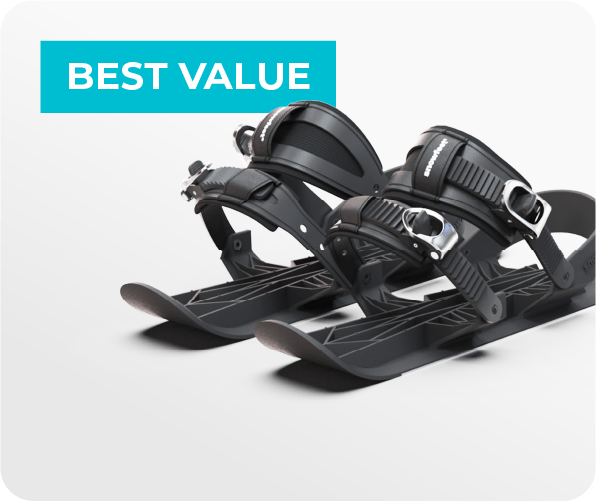



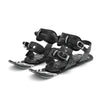
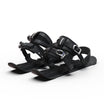
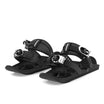

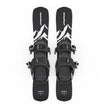
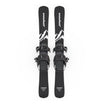

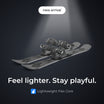
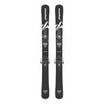
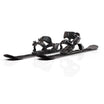
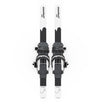


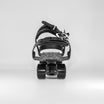

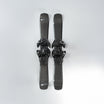



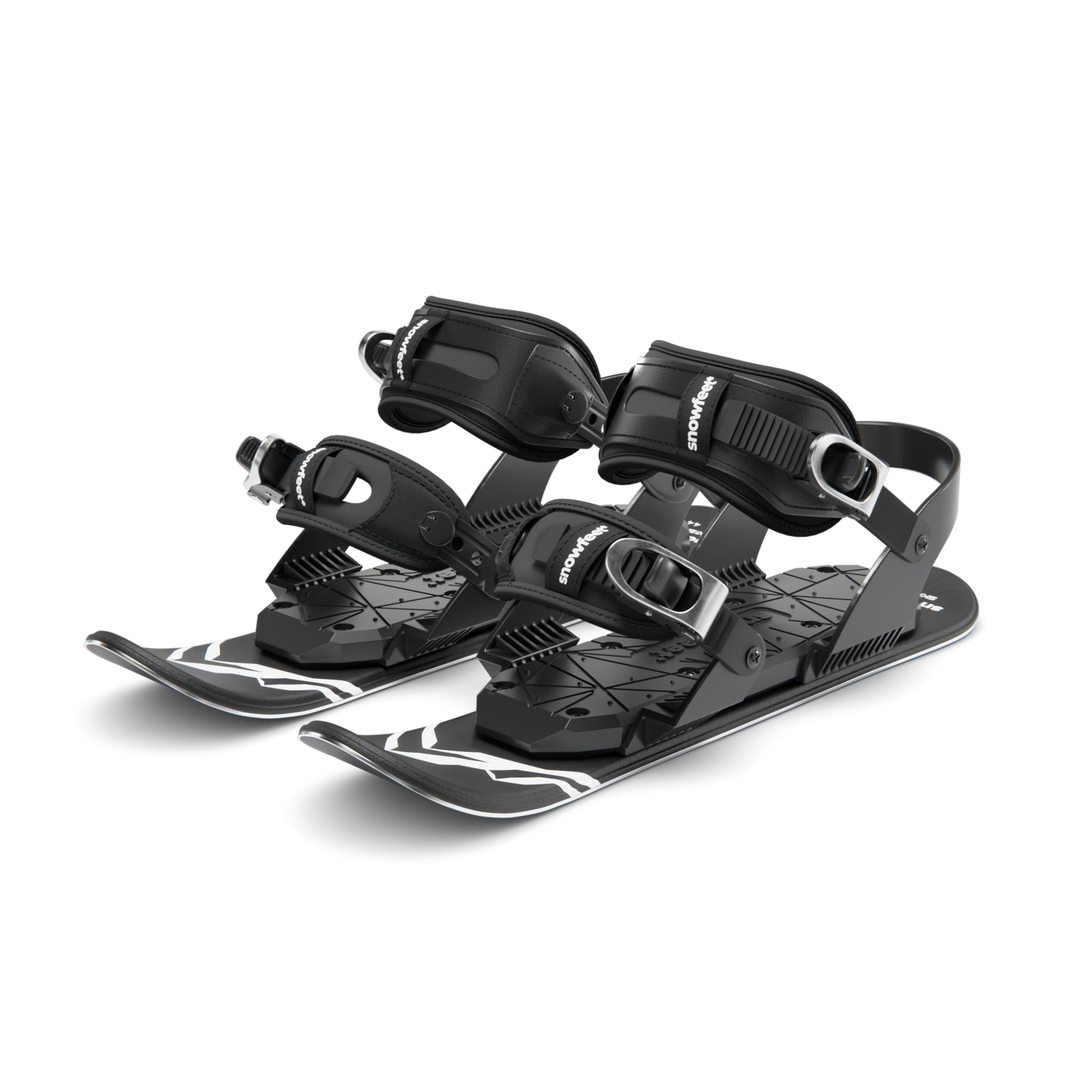
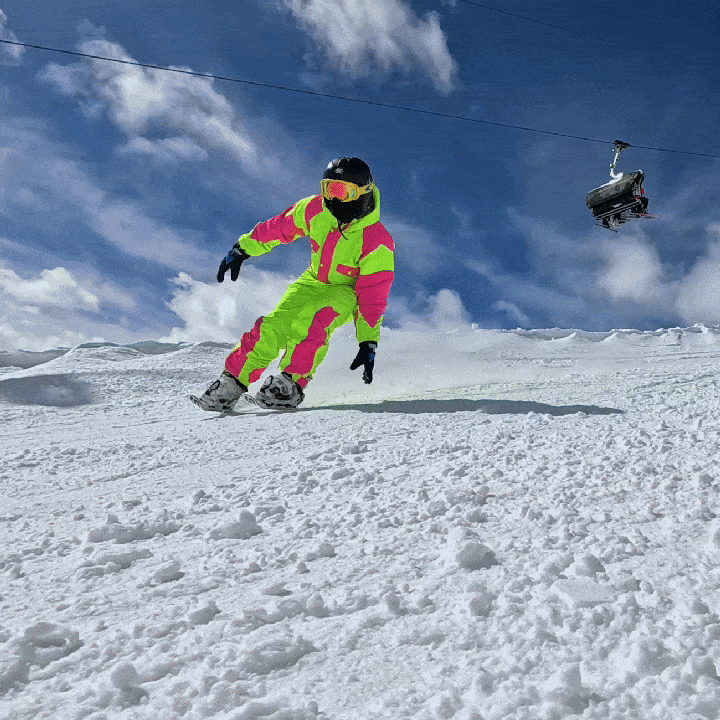
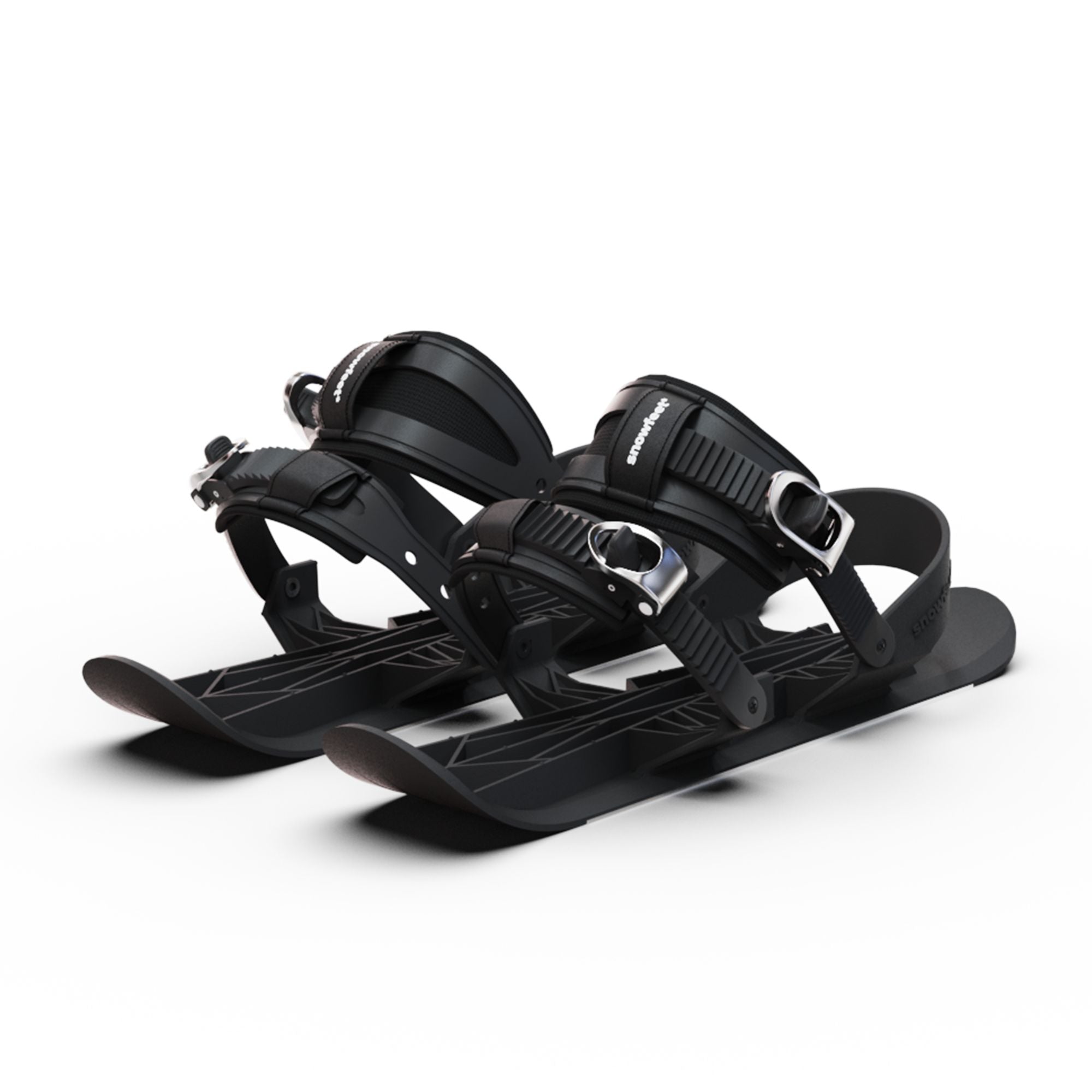
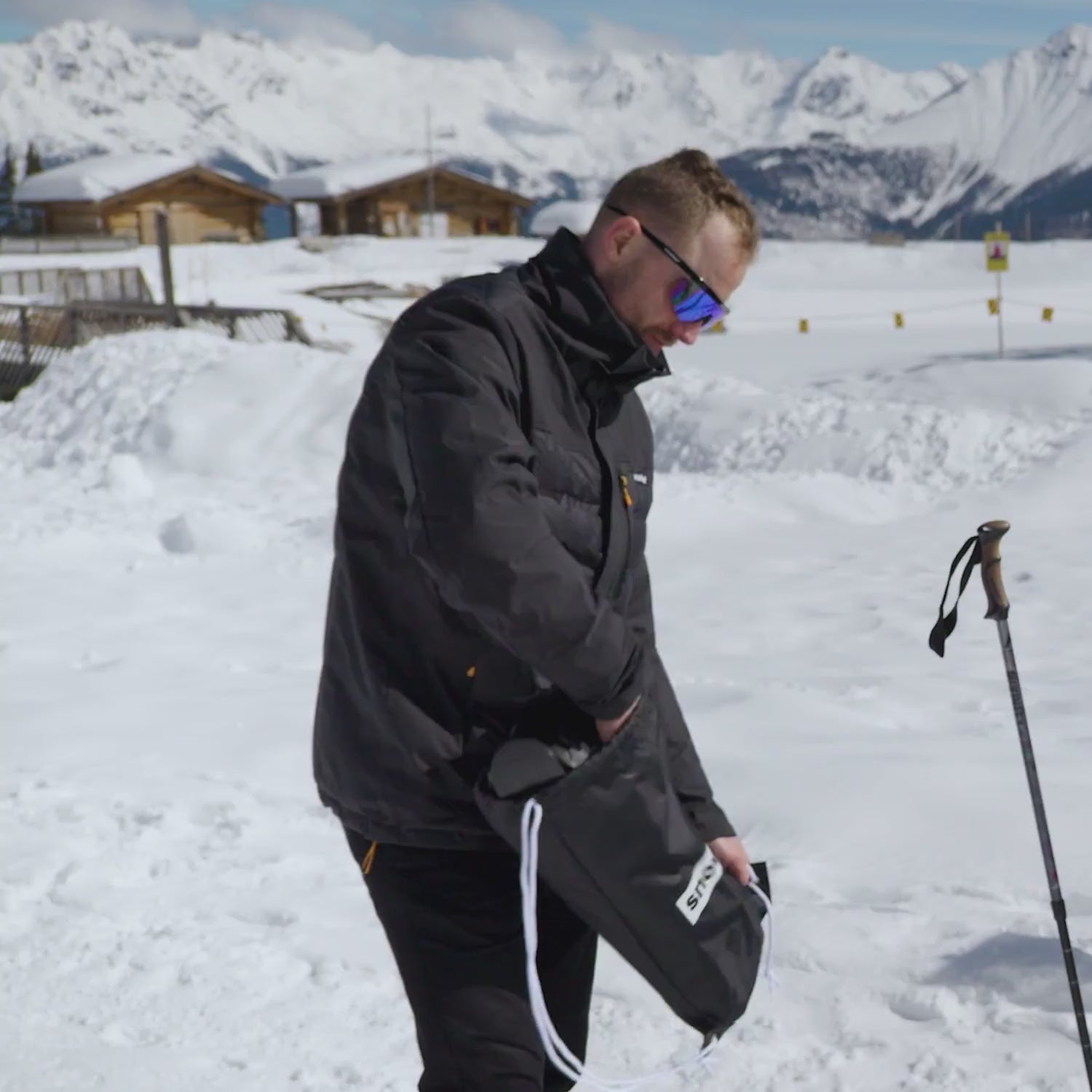
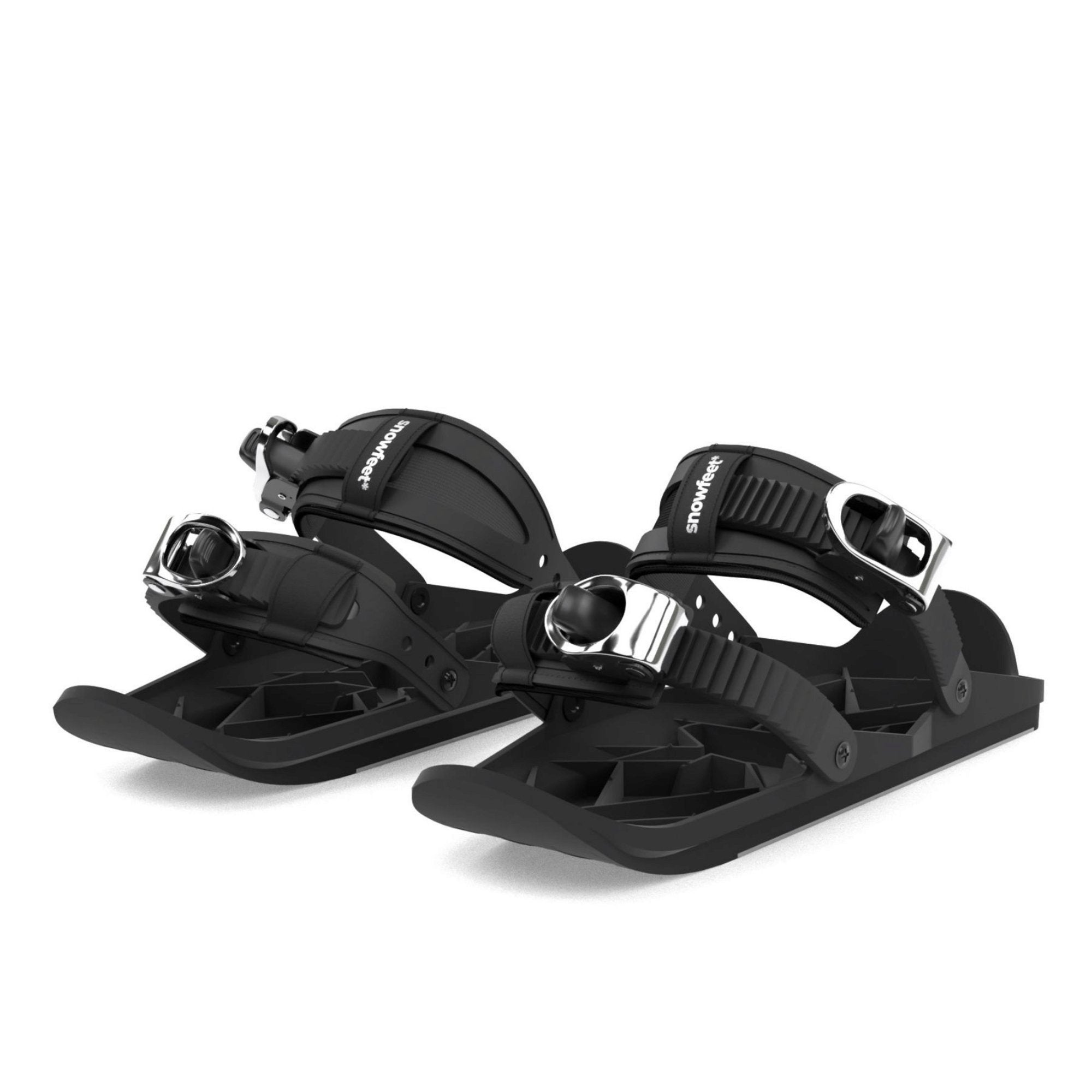
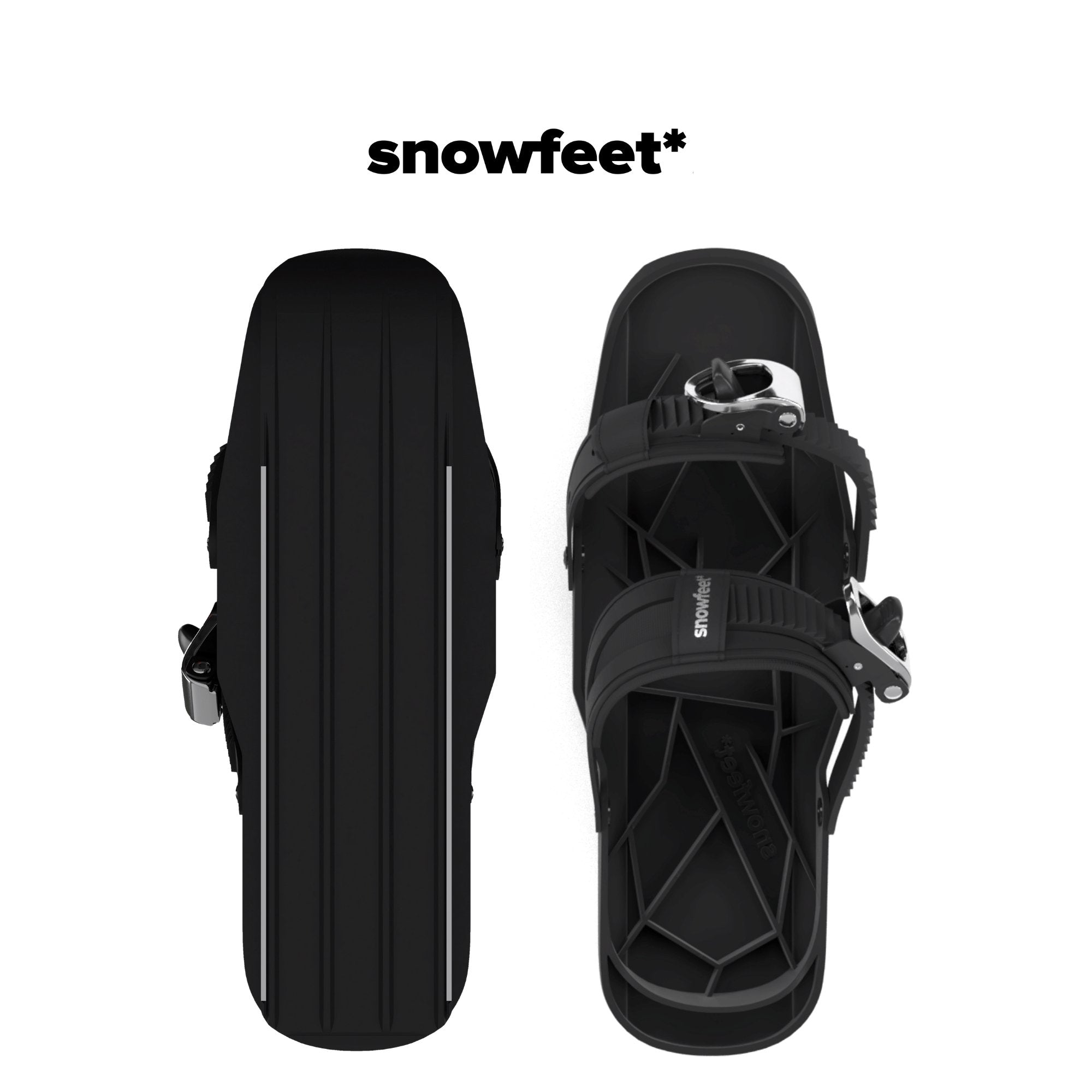
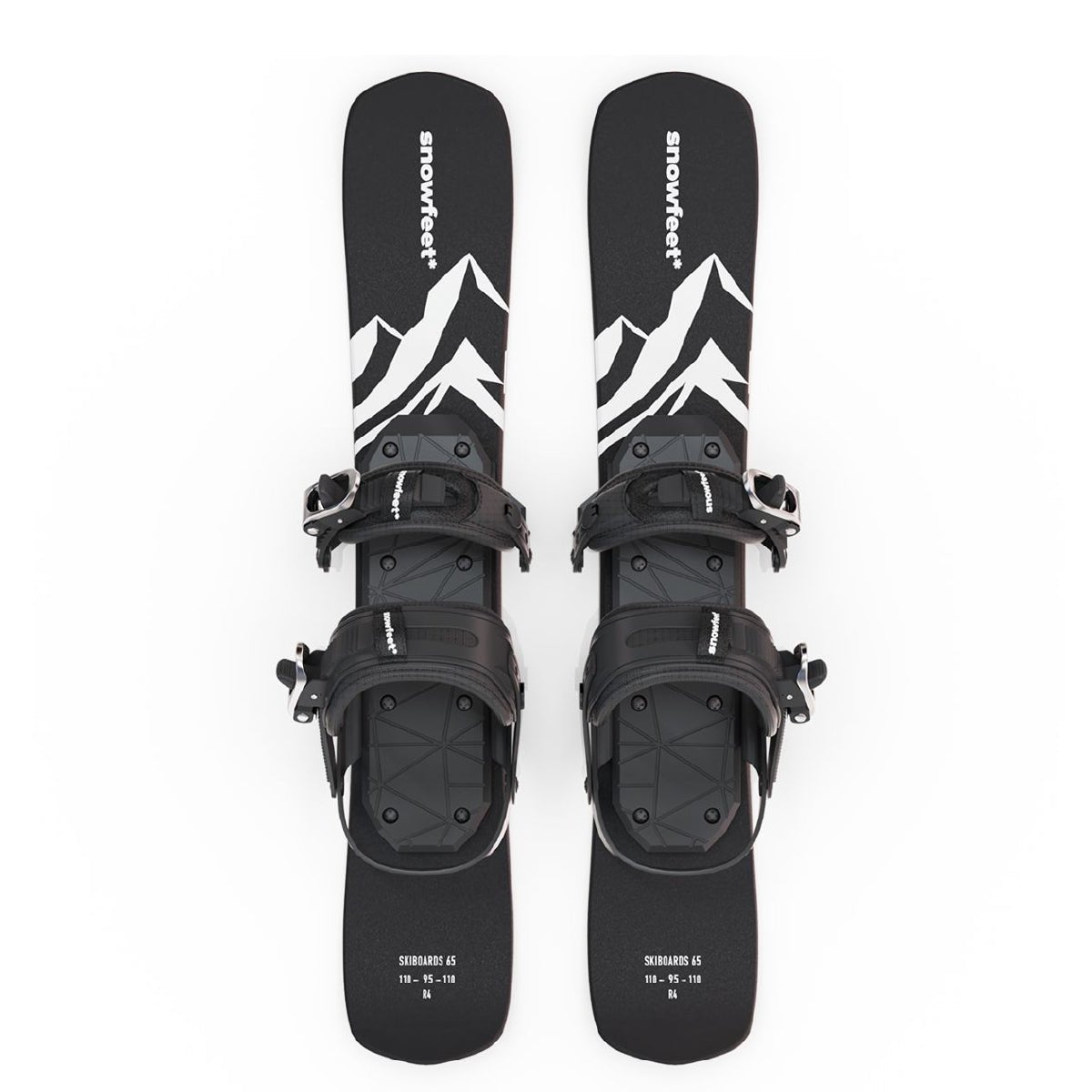

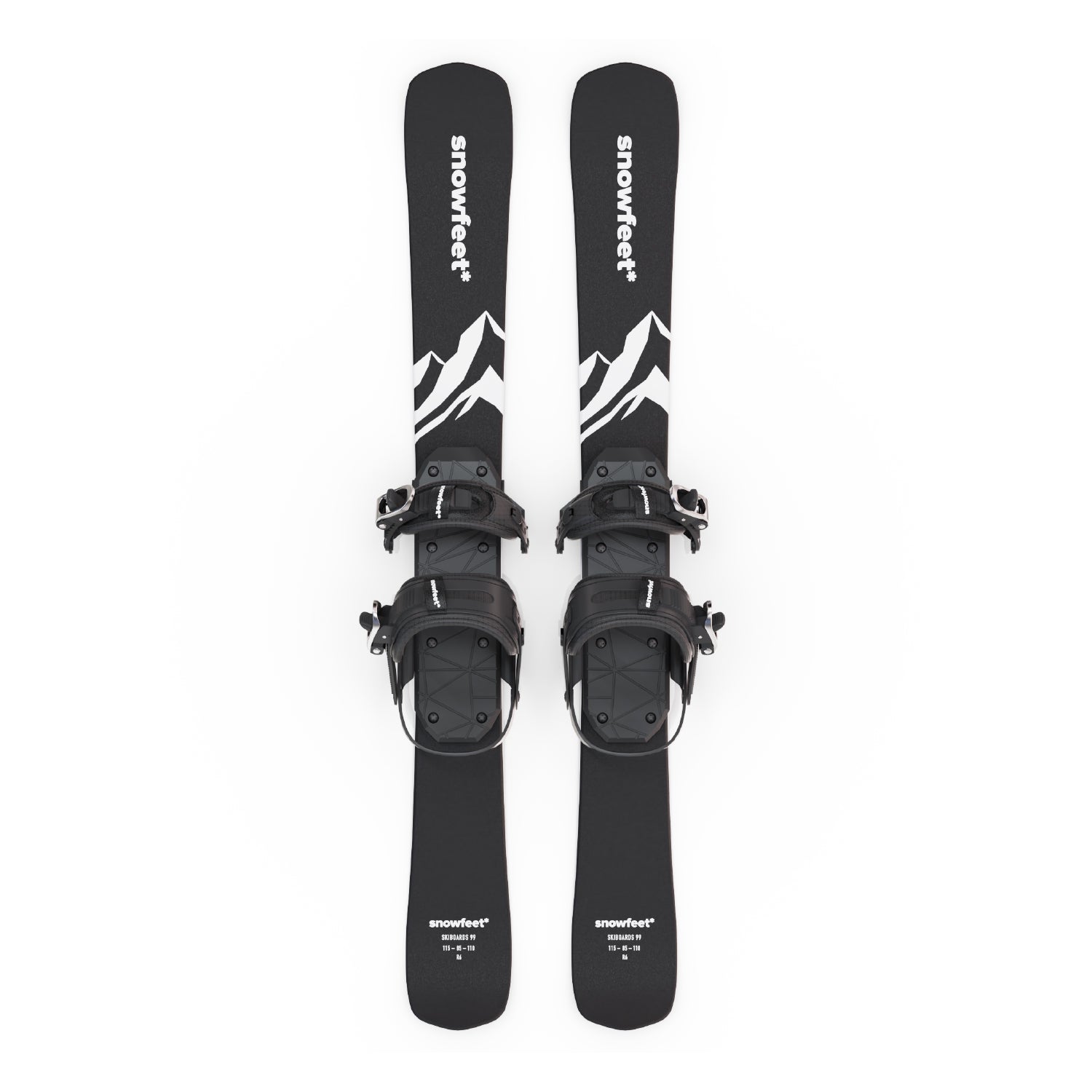
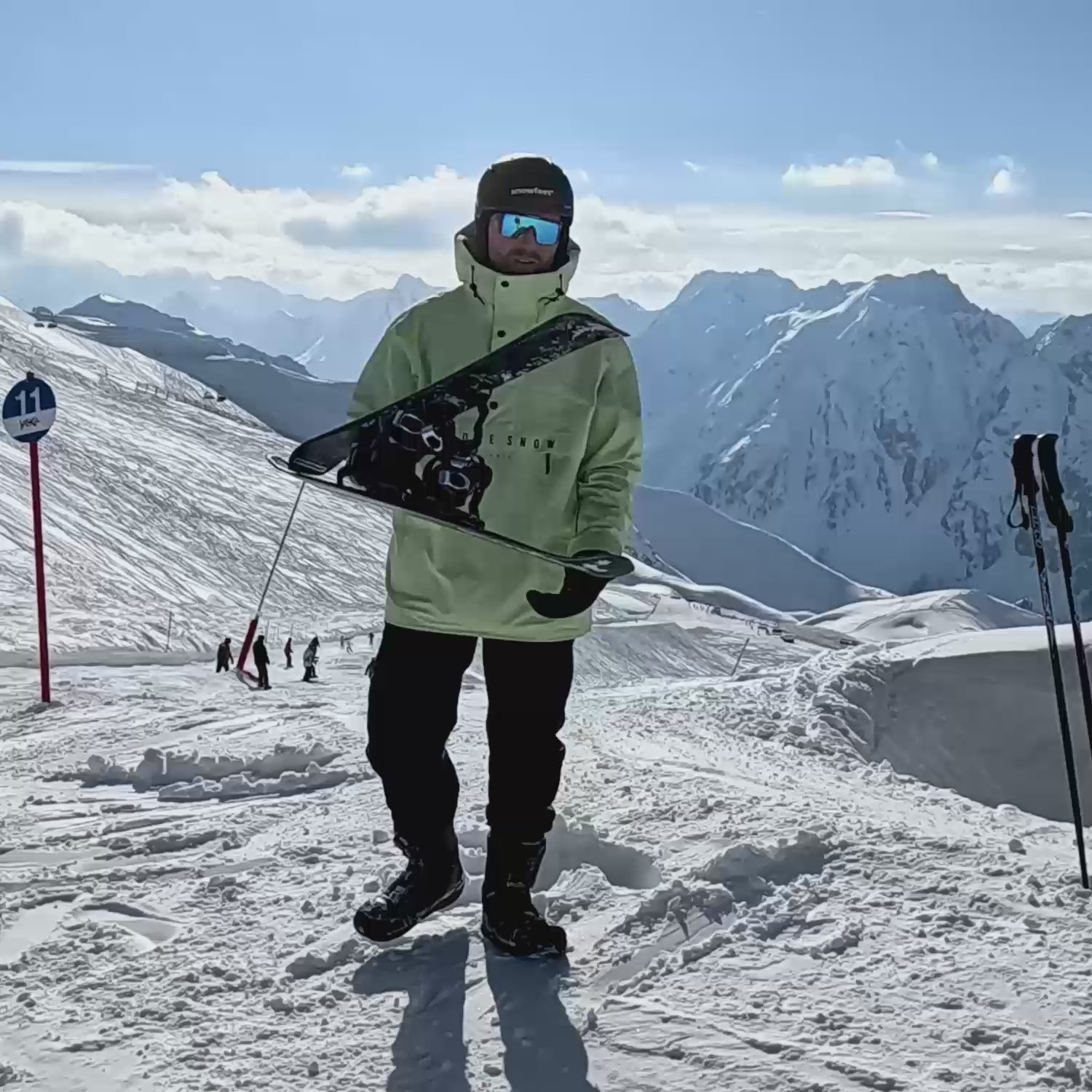
8 comments
Robertreire
элитные проститутки
Albertonop
boot chartern kroatien https://eurosegeln.com/yachtcharter-kroatien
RonaldFlich
https://zomi.net/budvacarme
Peterunado
tenerife yacht charter
Scottpaw
http://disqus.com/by/robertswiley/about/
Leave a comment
This site is protected by hCaptcha and the hCaptcha Privacy Policy and Terms of Service apply.